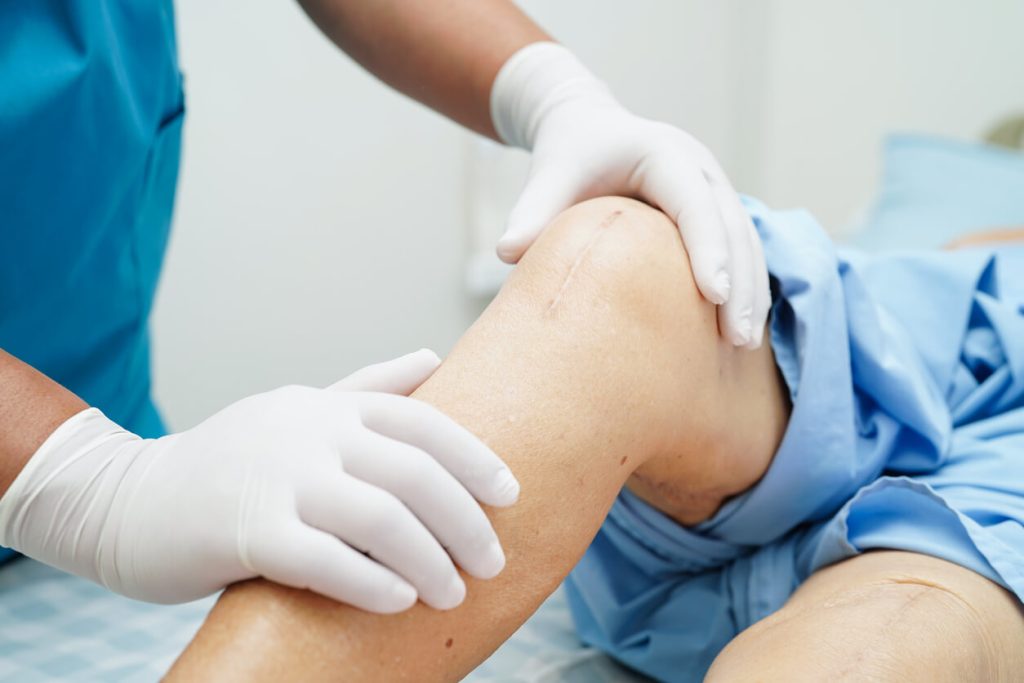Knee Replacement Surgery in Gorakhpur
Your Trusted Knee Replacement Surgeon in Gorakhpur
Why go to Delhi or Lucknow for knee replacement? Dr. Vatsal Khetan, a top Knee Replacement Surgeon in Betiahata, Gorakhpur, offers global-standard care to help you heal at home around loved ones.
As a specialized Knee Doctor in Gorakhpur, Dr. Khetan focuses on “Joint Preservation” first, moving to Knee Replacement in Gorakhpur only when it is the absolute best path for your long-term mobility.
Who Needs Knee Replacement in Gorakhpur?
If you experience:
- Persistent knee pain, especially at night or early morning
- Grinding or cracking sensation
- Swelling or Inflammation around Joints
- Walking or Stair Climbing Difficulty
- Stiffness, causing the movements to be limited
- Failure of medications or physiotherapies
- Rheumatoid Arthritis / Osteoarthritis / Knee arthritis
- Knee fractures
Then consulting a Knee Doctor in Gorakhpur, like Dr. Khetan, may be the right step.

Why Patients from Gorakhpur Prefer Dr. Vatsal

Advanced Implants Built For Durability

Assisted Mobility Planning Post-surgery

Same-day Mobility Initiation In Most Cases

Friendly Environment That Prioritizes Comfort

Customized Implants Matched To Your Lifestyle
Knee Replacement Surgery in Gorakhpur: The Process
Choosing a surgeon is about trust, but trusting the Best Knee Replacement in Gorakhpur is about results. Here's what you can expect in knee replacement procedures by Dr. Vatsal Khetan's clinic.
Successful surgeries performed
Patient satisfaction rate
Years of Surgical experience
Advanced surgical techniques
Life After Knee Replacement Surgery in Gorakhpur
Knee replacement is a life-altering experience for patients. The knee specialist in Gorakhpur not only alleviates knee pain but also provides new possibilities.
Take the First Step toward Pain-Free Living
Don’t let knee pain define your story. Call 9662365917 for a consultation with the most trusted Knee Replacement Surgeon in Gorakhpur.
FAQ
How long does Knee Replacement Surgery in Gorakhpur take?
Usually 60–90 minutes. Most patients start standing or walking with support within 24 hours.
Is the surgery painful?
Currently, with anesthesia and medicines, pain is very little and can be easily handled during the whole recovery time.
Is it safe for elderly people to have a Knee Replacement?
Indeed, age is not a factor if the general condition of the person is good and has been checked before the operation.
How can I be sure that I need a Knee Replacement in Gorakhpur?
If pain limits your movement even after taking medicines and doing therapy, then seeking the opinion of a Knee Doctor in Gorakhpur is the only way out.
What price will I really pay?
It depends upon which type of implant and your insurance; usually, we are very clear upfront about cost and accept all types of insurance. Please give us a call at 9662365917 to know better about your condition and cost estimate.
Can I return to sports?
Most people choose to go back to swimming, cycling, golfing, or hiking. It is advised not to do activities that put a lot of stress on the joints, like running or playing sports. We can guide you through the exercises that are compatible with your knee replacement.
Will I have to use crutches the rest of
No. Most people get beyond the use of crutches very quickly. Our physiotherapy team will support you in each stage to ensure you feel confident and secure throughout.

Meet the Best Knee Replacement Surgeons in Gorakhpur
Led by Dr. Vatsal Khetan, our orthopedic team includes some of the most experienced knee replacement surgeons in Gorakhpur. Whether you're considering total knee replacement surgery, mini knee replacement, or knee arthritis treatment, we ensure safe procedures, faster recovery, and long-term success.
Searching for the best knee replacement in Gorakhpur? Or a trusted expert for knee replacement surgery in Gorakhpur? Look no further than Dr. Vatsal Khetan, your go-to knee replacement doctor in Gorakhpur.
Solutions for Every Stiff Joint
If you’ve been searching for a Knee Doctor in Gorakhpur who actually listens, you’re in the right place. We handle:
- Total Knee Replacement (TKR): When arthritis has progressed to a severe level.
- Partial Knee Replacement: When the knee is only damaged in one area.
- Revision Surgery: In case the outcome of the surgeries conducted in other locations is not satisfactory.
- Robotic-Assisted Surgery: The best Knee Replacement Surgery in Gorakhpur.
